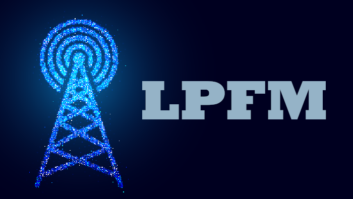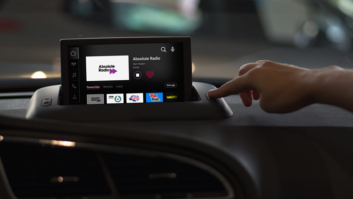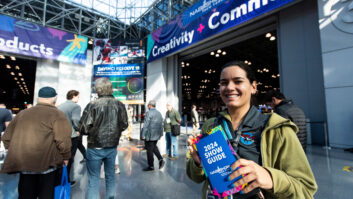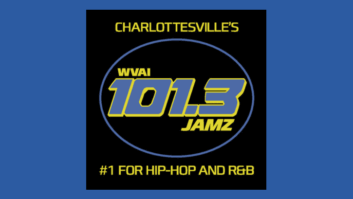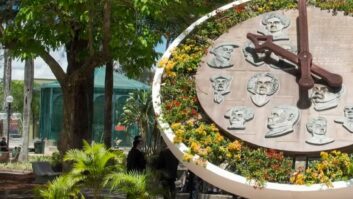Earlier this month, Radio World reported on the grant of a construction permit for a new LPFM station in Colorado Springs, Colo., which was awarded to the Colorado Society of Wireless and Broadcast Engineering. The 100-watt 107.1 FM application withstood an objection from a licensee of an adjacent-channel translator.
We found the station’s mission, which included the use of an software defined radio-powered transmitter and exploration of open-source HD Radio, intriguing.
Radio World talked with Vlad Fomitchev, the society’s founder, and asked him for more details. He works in the SDR space at AnySignal and sees nearly untapped potential to introduce young people into the broadcast sphere.
Florida Polytechnic journey

As long as Fomitchev can remember, he has had the radio bug.
He grew up in central Pennsylvania. His father, Max, taught at Penn State and holds doctorates in both computer science and computer engineering.
But Vlad, now 26, didn’t inherit his interests directly. “He does participate in a variety of mad science,” Fomitchev said, “but it has nothing to do with radio.”
It was actually one of his dad’s colleagues who introduced him to amateur radio when he was 10. He still recalls being enchanted by the ham shack. In 2016, he earned his ham license (KX4TH).
That same year, Fomitchev enrolled at Florida Polytechnic University, where he earned a bachelor’s degree in electrical and electronics engineering. There, he started the school’s amateur radio club, chaired it and affiliated it with IEEE.
The Polk County, Fla., Government’s YouTube channel detailed some of Fomitchev’s student-led efforts in 2019:
“I got to learn a great deal, and we got a bunch of students their amateur radio licenses,” Fomitchev recalled. He credits club president Robert Acacio — now at the FCC — as a key influence.
It was also at Florida Poly that Fomitchev began exploring software-defined radios. He stumbled upon a lab where a professor was experimenting with a Wi-Fi-based mesh network using SDRs. “I just happened to walk by the lab one day and thought, this looks sick,” he said.
One thing led to another and he joined the project.
He dove into GNU Radio — the open-source signal processing toolkit — using hardware from Ettus. He was hooked. SDRs, he realized, had huge untapped potential. “Especially when you start connecting front-end components like filters and amplifiers,” he said.
Software-defined transmitting
Most people think of SDRs for receiving. Popular options include the Airspy and models from SDRplay.
[Related: “SDR: The Next Level of Shortwave Radio Listening”]
But Fomitchev saw opportunity in transmitting.
That led him to explore existing open-source standards, including a GNU-based implementation of HD Radio by Clayton Smith, and an analog stereo transmitter demo built to showcase RDS capabilities.

To Fomitchev’s knowledge, no one had combined the two.
Using a LimeSDR Mini — about $77 on AliExpress — he set up a Part 15 station on the Florida Poly campus. “A match made in heaven,” he said. For the antenna, he used a dipole that came with his RTL-SDR.
He leaned into the freeform spirit of campus radio, coding a scheduling interface and updating RDS RadioText.
It also paid off professionally. Fomitchev landed an internship with L3Harris, eventually joining their SDR development team.
Today, he works at AnySignal as an RF and DSP engineer, developing aerospace and defense platforms.
But the idea of a radio station powered by SDR never left him.
“It would be so easy,” he said. It’s an almost completely unexplored space, he added.
In 2023, he took part in a challenge at the GNU Radio Conference’s Capture the Flag event in Arizona, where he generated an NRSC-5 signal with metadata and album art.
That December, he applied for an LPFM license in Colorado Springs under the newly-formed Colorado Society of Wireless and Broadcast Engineering — a group established in part to manage the station.
A space to explore radio transmitting

With other youthful and energetic SDR-savvy colleagues involved, Fomitchev sees plenty of potential.
That includes mentoring young people interested in engineering careers.
Programming plans start with more than 4,000 electronica tracks from his personal library, but Fomitchev also wants coverage of local politics, space for local DJs and hourly announcements for community events.
“I’d love to create radio that gets back to its main purpose,” he said.
(Read Fomitchev’s blog at his website, Vlad’s Vault)
He also plans to collaborate with contacts at the University of Colorado-Colorado Springs to involve students in the station — especially on the engineering side.
For the station’s analog SDR transmitter, he’s working with the FCC to ensure it meets Part 73 certifications. He’s mindful of regulations. “I have high confidence I can put together something that is compliant,” he said, adding that he plans to use a cavity filter to minimize harmonics and out-of-band emissions. He’s already been in touch with FCC staff on the implementation.
Eventually, Fomitchev hopes to add experimental HD Radio service to the station.
He expects to be on the air within a few months, pending final decisions like call letters. He’s eager to see the local response.
Fomitchev remains active in nearby amateur radio clubs and wants to involve a local deep space exploration society, too. He’s been in contact with local broadcast engineers who gave him a tour of the Cheyenne Mountain antenna farm, which he detailed at his website.
His ambitions also include diving into the baseband space between the FM signal and subcarriers — another engineering sandbox.
How it will shape out he’s not exactly certain. But given his knowledge and passion, Fomitchev gets the feeling that the LPFM will offer the opportunity for discoveries that could benefit the broadcast community at large.
“There’s all kinds of possibilities for engineering projects here,” he said.
Radio World welcomes letters to the editor on this or any story. Email [email protected].
